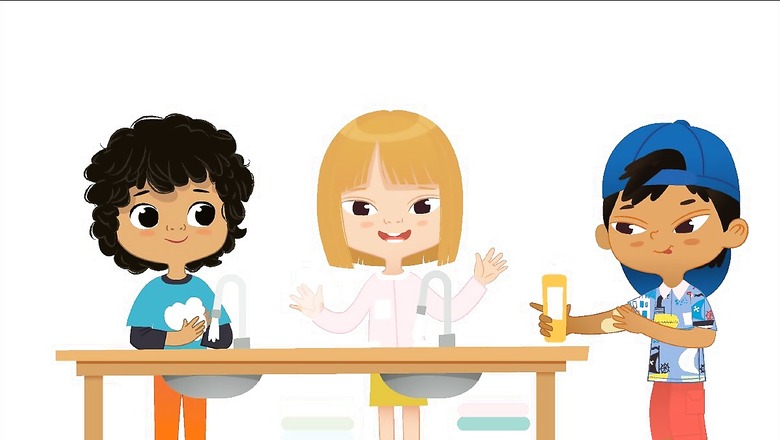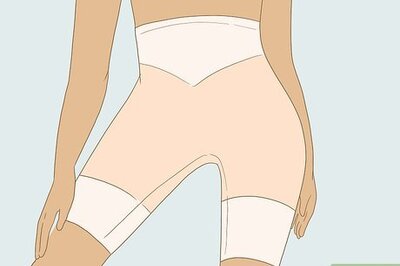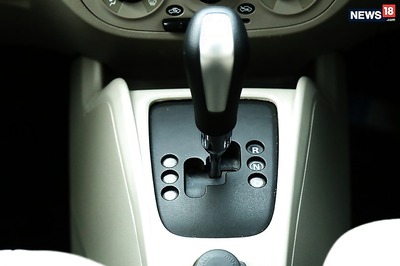
views
The concept of “accessibility” frequently comes into play when creating environments for seniors or individuals with special requirements. Nevertheless, to ensure a truly inclusive design that accommodates children effectively, it’s crucial to also comprehend and address their unique needs.
Children are often reluctant to use public restrooms, especially when they are dirty, smelly, or crowded. This can lead to health problems associated with ‘holding it’, such as urinary tract infections, constipation, or dehydration. Moreover, children may not practise proper toilet hygiene habits, such as washing their hands (because the sink is too high, or they can’t reach the soap dispenser) or flushing the toilet (because the flush system is unfamiliar), which can increase the risk of spreading germs and diseases.
How can we design restrooms that are more appealing and comfortable for children, while also encouraging them to adopt good hygiene practices?
One of the main challenges of designing child-friendly restrooms is to make them accessible and adaptable to different ages and abilities. Children have different physical and cognitive needs than adults, and they may require assistance or supervision from their parents or caregivers. Therefore, it is important to provide features that cater to their specific needs.
Safety
Since children can be more prone to accidents and injuries, it is essential to provide a safe environment that minimises risks. Some safety measures that can be implemented are:
- Choosing slip-resistant flooring materials that prevent falls and injuries.
- Installing grab bars and handrails near toilets, sinks, and showers to help children balance and support themselves.
- Providing adequate lighting and ventilation to avoid dark or stuffy spaces that can cause discomfort or anxiety.
- Using rounded edges and corners on fixtures and furniture to prevent cuts and bruises.
- Avoiding sharp or protruding objects that can pose a hazard to children’s eyes or heads.
- Using child-proof locks and latches on doors and cabinets to prevent children from accessing dangerous items or getting locked in.
Accessibility
Children are shorter and less physically coordinated than adults, so it is important to provide facilities that are easy for them to use and reach. Some accessibility features that can be incorporated are:
- Adjusting the height and size of toilets, sinks, faucets, mirrors, soap dispensers, towel racks, etc. to suit children’s stature and reach.
- Providing step stools or platforms for children who need extra height to access certain fixtures or amenities.
- Using sensor-operated or lever-type faucets and flush valves that are easier to operate than knobs or buttons.
- Providing clear and simple signage and labels that help children identify and locate different facilities and functions.
- Using contrasting colours and textures to differentiate between different elements and surfaces.
Hygiene
Children’s immune systems are still developing, which makes them more vulnerable to germs and infections, so it is important to create a clean and safe toilet environment. Some hygiene practices prove effective are:
- Using antimicrobial materials and finishes that resist bacteria and mould growth.
- Installing touchless or self-cleaning fixtures that reduce the need for manual cleaning and maintenance.
- Providing adequate trash bins and disposal systems for paper towels, diapers, sanitary pads, etc.
- Providing hand dryers or towels that help children dry their hands after washing them.
- Educating children about the importance of washing their hands before and after using the bathroom.
Fun
Children are more likely to enjoy using the bathroom if it is a pleasant and stimulating space that appeals to their senses and imagination. Some fun elements that can be added are:
- Using bright and cheerful colours and patterns that create a lively and inviting atmosphere.
- Incorporating playful shapes and forms that resemble animals, plants, vehicles, etc. into the fixtures and furniture.
- Adding interactive features such as music, sounds, lights, games, puzzles, etc. that entertain and engage children while they use the bathroom.
- Displaying artworks or murals that depict scenes or stories that inspire children’s creativity and curiosity.
Awareness
Providing informative elements such as signs, posters, stickers, or cartoons that explain the steps and benefits of toilet hygiene practices. For example, a restroom could have signs that remind children to wash their hands with soap and water for at least 20 seconds, posters that show how germs can spread from hands to mouth or nose, stickers that praise children for flushing the toilet or throwing away trash, or cartoons that illustrate the consequences of poor hygiene habits.
Building a Culture of Good Toilet Hygiene
Awareness needs to go beyond the toilet, of course. Toilet and personal hygiene is a life skill and when taught early, and taught well, becomes a lifelong set of habits that contribute to the child’s health and well-being. In addition to building these habits at home, it is important that these habits be reinforced in school as well. After all, the child spends a major chunk of their day in school, and if the school toilets aren’t clean, safe and accessible, they are imbibing that toilet hygiene isn’t all that important!
Of course, keeping a school toilet clean involves participation from the entire school. This is why implementing a toilet hygiene curriculum is very effective – when all the children are on the same page, and understand the importance of keeping the toilet clean for the next person.
Harpic, India’s leading brand in the lavatory care segment, recognises this and has directed several outreach programs towards schools and school children. Harpic has also partnered with News18 in the Mission Swachhta aur Paani Initiative, which has, for 3 years now, championed the cause of inclusive sanitation, equality for all genders, abilities, castes and classes and the strong belief that clean toilets are a shared responsibility.
Under the aegis of Mission Swachhta aur Paani, Harpic partnered with Sesame Workshop India, an educational non-profit, to promote positive sanitation, hygiene knowledge and behaviours among children and families through schools and communities, engaging with 17.5 million children across India.
For parents, Mission Swachhta aur Paani serves as a valuable resource where they can empower themselves with the information they need to effectively champion toilet hygiene at their children’s schools. Of course, you don’t need to be a parent to make a difference here. There is information on a number of topics related to toilet hygiene and toilet access, and you can take your pick on the cause you want to champion, and how.
It is when each of us does our part, that we create a Swachh and Swasth Bharat. Join us here, in this national transformation.



















Comments
0 comment